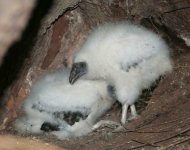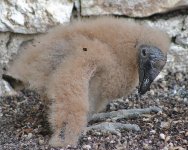Second, vultures are now treated as being in the stork family, so they are not really birds of prey and one would not expect them to share traits with hawks or other true birds of prey.
Best,
Jim Moore
Really old news, Jim, like 2006 and before. Just goes to show the perils of info from the net.
"It should be pointed out that the widespread classification of birds published by Charles Sibley and colleagues (Sibley and Ahlquist, 1990; Sibley and Monroe, 1990), rests on the severely criticized and now abandoned DNA-DNA hybridization method (Cracraft, 1987; Houde, 1987; Sarich et al., 1989). Furthermore, the trees were constructed from these questionable, phenetic data by using highly subjective methods (Cracraft, 1987; Houde, 1987; Sarich et al., 1989). These shortcomings have resulted in a well-deserved scepticism of Sibley’s classification, although some of the results have been confirmed by other methods. Furthermore, the controversial DNA-DNA hybridization studies undeniably have sparked a considerably research interest in avian systematics."







